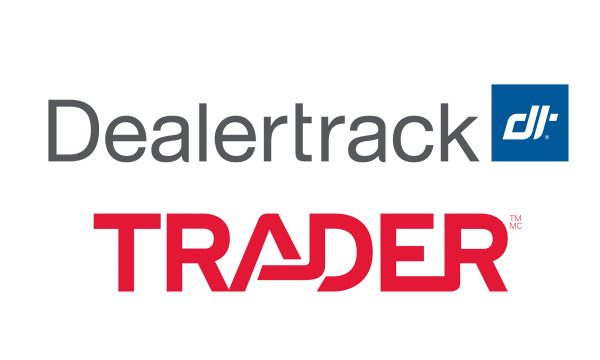The relationship between dealer and buyer is less about selling and closing, and more about facilitating the customer’s acquisition of a new vehicle.

We can’t open a newspaper (correction, open our mobile news feed) these days, let alone the pages of this publication, without reading how technology is reshaping our industry.
A decade ago Silicon Valley technopreneur Marc Andreessen pronounced in the Wall Street Journal that “software is eating the world.” Today, that same statement might use artificial intelligence in place of software.
New mobility companies like Tesla are rewriting the playbook. Established OEMs are realizing that core competencies in design, engineering, manufacturing, and quality are insufficient to guarantee success in a connected, electrified, and autonomous world. We have always understood that each model year of a vehicle had features that were discrete and unchanging over time.
This formula is no longer valid. Vehicles are now software platforms with features and functionality that become better over time as upgrades are delivered OTA (over-the-air), like the iPhone update I recently downloaded.
The scale of transformation that automakers like General Motors, Hyundai, and Volkswagen are in the process of making is nothing short of breathtaking. Global equity markets and governments are demanding it. Consumers benefit from it. To lag in this transformation puts the global enterprise at risk.
But what about the retail network? How is technology changing the role dealers play in the mobility value chain? Like the OEMs they represent, status quo is not an option.
The pandemic accelerated the adoption of digital tools by Canadian dealers. And that’s a good thing, because the imperative to do so (in marketing, sales and service) pre-dates the pandemic. If consumers can order and pay for a customized $6 latte on their Starbucks app, imagine what expectations they have for their automotive retailer.
I can’t take credit for this observation, but my favourite pandemic insight was that the auto industry needs to stop using the expression “digital retail” — it’s just retail, in the same way every other consumer-facing business has evolved, from restaurants to groceries, without adding the descriptor. If we need to label it then omni-channel is better, because it reflects that consumers want choice in how they engage with us — passively online, interactively online, or in-person. For many customers, it’s all three at various points in their journey.
Study after study confirms that consumers expect their automotive retail experience to be: Transparent, Efficient and Flexible. And in the emerging world of electrified vehicles, I propose to add Facilitated to create a new acronym, TEFF. I acknowledge that TEFF doesn’t roll off the tongue as easily as CASE, but it encapsulates the key success factors for auto retailers in a rapidly changing industry.
The word facilitate is key, from the French verb facile, or “to make easy.” With most Canadians using the Internet for at least some of their vehicle purchase, there has been a subtle but important shift in the relationship between dealer and buyer. It is less about selling and closing, and more about facilitating the customer’s acquisition of their new vehicle.
As EVs become more commonplace in our showrooms this evolution from seller to facilitator will accelerate, as we move beyond early-adopters to the heart of the market where many customers need some hand-holding to overcome doubts of moving from ICE to electromobility. The test drive for these buyers is critical, along with supporting home charging and mobile apps to enhance the ownership experience.
New entrants like Rivian are embracing the facilitated experience model with the introduction of Rivian Guides — dedicated brand ambassadors who are paired with the customer to provide personalized support throughout the entire journey, from pre-order through selection, delivery, customer education, and ownership. As the Rivian website explains, whatever you need, your guide is here to help.
The great news is that many Canadian dealers are already innovating to provide customers with a TEFF-aligned experience.
Groupe Park Avenue’s Silver Star Mercedes-Benz in Montreal supports customers with small, dedicated teams (Super Teams) throughout the shopping process, using customized video and vehicle configuration tools. Led by a team leader, the Super Team facilitates paperwork, delivery, and ongoing maintenance needs. No hand-offs, minimal if any friction, and a more personalized dealership and brand experience.
While each Super Team supports fewer customers than a traditional sales consultant, they are able to optimize gross profit across the customer life cycle, including the vehicle sale, accessories, finance, parts and service, and subscription services.
Pfaff Automotive in Ontario was one of the first dealer groups to successfully adopt a “Best Price First” approach across its stores, using market-specific pricing analytics to provide a transparent purchase experience, along with a money-back guarantee. Another TEFF-aligned approach.
Electrified or not, vehicles are a high engagement purchase for most consumers. Dealers play a vital role in the delivery of a great customer experience, and this is true whether in urban, suburban or rural communities.
In future columns, we’ll talk more about the importance of the after-sales experience. But the fact remains, the role of the automotive dealer is changing — just like the vehicles, and the software and apps, that we are selling.
Innovate to prosper.
Darren Slind is Co-Founder and Managing Director, Claify Group Inc. and a respected auto industry analyst. You can reach him at dslind@clarify.group











